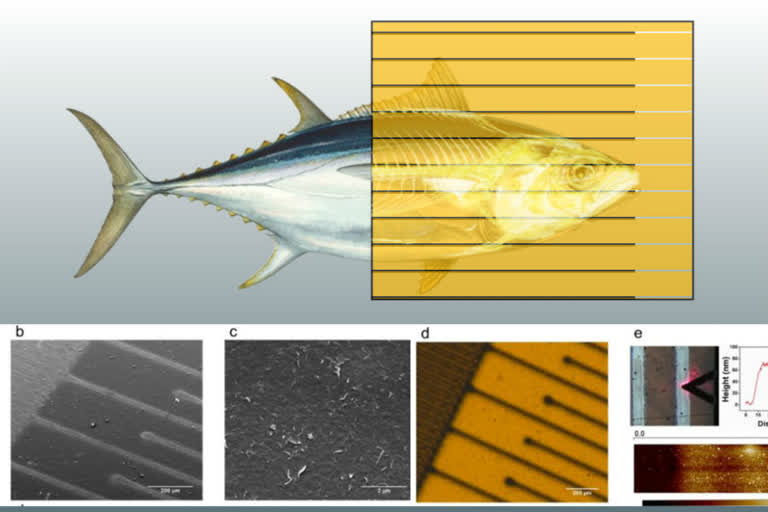AMES, Iowa: Researchers of Iowa State have developed ways to check the freshness of the fish and meat which you are consuming. They dipped their new, printed sensors(with high-resolution aerosol jet printers on a flexible polymer film) into tuna broth and watched the readings.This study has been published online by the journal 2D Materials, supported by The National Science Foundation, the U.S. Department of Agriculture, the Air Force Research Laboratory and the National Institute of Standards and Technology
How these electro-chemical sensors work? Graphene, a super material made of carbon honeycomb, known for its strength, electrical conductivity, flexibility and bio-compatibility is a part of sensor technology which helps to detect histamine via the creation of high resolution electrodes. Histamine is an allergen and indicator of spoiled fish and meat.
This technology can can detect histamine down to 3.41 parts per million.
The U.S. Food and Drug Administration has set histamine guidelines of 50 parts per million in fish, making the sensors more than sensitive enough to track food freshness and safety.
"This fine resolution is important," said Jonathan Claussen, an associate professor of mechanical engineering at Iowa State University and one of the leaders of the research project. "The closer we can print these electrode fingers, in general, the higher the sensitivity of these biosensors."
The other researcher Gomes said that histamine is produced by bacteria so it can help in indicating the shelf life of food. As a result histamine sensor is not only restricted to check the freshness of fish alone.
The researchers believe the concept will work to detect other kinds of molecules, too. They also said in the paper that this process can help in diverse range of sensing applications including-
- Environmental toxin detection
- Food borne pathogen detection
- Wearable health monitoring
- Health diagnostics
It can also be used in detecting salmonella bacteria, or cancers or animal diseases such as avian influenza. With little modification in this sensor technology (aerosol-jet-printed sensors) it can help to detect cytokines, or markers of inflammation.
These sensors can also be used to monitor immune system function in cattle and detect deadly and contagious para tuberculosis at early stages.
These sensors don't cost a lot of money and can be scaled up for mass production.
Claussen, Hersam and other collaborators have spoken about the varied uses of the sensors in their research paper.
Also Read:History, Facts and Figures of World Social Media Day celebrated on June 30



